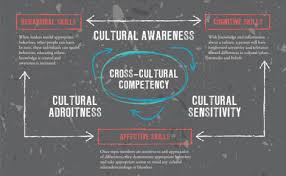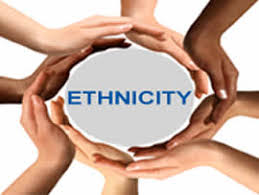
Indigenous Culture Case Study
Order Instructions:
I will upload the requirement files to you.
SAMPLE ANSWER
Case Study: Indigenous Culture
Russell Nelly spent his childhood in Gwonangerup and Marribank mission centers. Discrimination is the most conspicuous social injustice in Nelly’s scenario. The scenario depicts a situation in which government policies were hurting rather than promoting the well-being of the Aboriginal people.
Disrespect to human rights was immense in Nelly’s life. Societal rejection was also a severe challenge for Nelly. Both social and healthcare wellness matters were a concern. Social complications such as injustices and rejection would only be corrected by engaging the community in reforms (Cacioppo & Cacioppo, 2014, Pg. 52).
Nelly encountered health complications such as cancer and diabetes. His use of herbs to manage cancer implies that he had limited access to conventional and standard healthcare services. According to researchers, some herbs could be effective in the management of cancer but others could be detrimental, more so because they are unstandardized (Orang-Ojong, Munyangaju, Wei, Lin, Wei, Foukunang, & Zhu, 2013, Pg. 610). Active participation of communities in policy making would have worked well in Nelly’s case.
Nelly changed the perception of his identity as he grew up. Nelly’s experiences in babyhood such as poor parentage imparted an identity of self-worthless. As a little boy, Nelly could not identify himself in the society. He knew he was of a minority group and that he was not privileged to enjoy fundamental health and social services as the majority would do. In his youth, Nelly got empowered by his interaction with the law, culture, and environment and developed an identity of self-worthiness. His adulthood was marked with an identity of being a resourceful to the rest of the community. In his adulthood, Nelly could analyse problems and offer solutions that did not apply to himself only, but also to other people.
Having been taken to mission homes by the government and the experiences of being regarded as the Stolen Generation had significant impact on Nelly’s health. The experience subjected him to diminished self-esteem, mental stress, and depression. Nelly’s experiences at Marribank contributed the most to shaping his present as he acknowledged. It is imperative that his culture and experiences of poverty, discrimination, and social injustices were crucial determinants in shaping his life. Scholars have suggested that people’s ability to uphold their culture amid challenges improve their wellness state. (Eckermann, Dowd, Chong, Nixon, Grey, & Johnson, 2010, Pg. 98). Nelly’s ability to uphold his culture was important in determining his present position in the society.
Worksheet Two
Emotional stress, unhealthy practices, and acquisition of disease were significant events in Nelly’s life. He had a scanty encounter with his parents, engaged in unsafe practices such as sexual immorality, and he was later diagnosed with diabetes. Poor livelihood such as taking unhealthy diets also contributed to his poor health. Current policies require the society to protect children and minimize their exposure to health complications (Australian Human Rights Commission [AHRC], 2007). This was not the case at the time of Nelly’s childhood. Not only did the society fail to safeguard him from drug use, but it also gave him emotional discouragement as noted at his encounter with doctors. Advocates of ethics put it that it is the role of healthcare practitioners to encourage rather than discourage their clients (Raja, Hasnain, Vadakumchery, Hamad, Shah, Hoersch, 2015). The reasons offered concerning Nelly’s possible death were not appropriate. Societal distrust to the minority was evident when doctors gave a negative prognosis without necessarily establishing its basis. The occurrence depicted both professional and cultural incompetence from the healthcare providers. Health professionals are answerable to relevant codes of conduct. Ethical practice is among the prioritised sectors in healthcare provision. Medicines Australia insisted that clinicians should practice in a manner that places patients at the center of care (Medicines Australia, 2015). Failure to observe such codes amounts to professional ineptitude. The health care system did not offer the best to Nelly. He did not only lack access to medical care, but also experienced unfair treatment in hospitals.
Nelly’s story was plausible, and it could apply to other people in the Aboriginal population. However, Nelly applied strong beliefs and confidence in the methods he applied in managing his health condition. It is most likely that the methods would only work in people who express a certain threshold of trust in such interventions. Usually, patients’ perception and beliefs influence the efficiency of the medications they use to treat diseases (Street, & Haidet, 2011, Pg. 21).
Empowerment entails giving people a chance to make informed decisions (Eckermann et al., 2010, Pg. 196). For patients, empowerment involves allowing the sick to decide how they would like to manage their health status (World Health Organisation, 2009). Elements that empower healthcare students include an approach to promote self-management and health literacy in decision-making (Bravo, Edwards, Barr, Scholl, Elwyn, McAllister, & the Cochrane Healthcare Quality Research Group, Cardiff University, 2015, Pg. 252). Nelly achieved empowerment in his adulthood.
Russell Nelly’s case study reflects important information in healthcare. It covers a range of issues that present in most healthcare and social setups. Researchers outlined issues that present in healthcare such as the influence of the society, culture, environment, and the political setup on people’s health (Pampel, Krueger, & Denney, 2010, Pg. 349). The stolen generation underwent multiple hardships in search of social and medical health (Eckermann et al., 2010, Pg. 98). From a personal perspective, the learner noted not to have encountered similar instances as Nelly. The institution of corrective policies is one of the reasons that guaranteed the learner a better experience than Nelly. The policies were to eliminate discrimination and promote equality (National Congress of Australias First Peoples, 2011). Nelly’s most important thing is to enjoy equal treatment in both social and healthcare setups. It is also important for him to advocate for the Aboriginal community and help them develop a sense of worth and capability. For the learner, it would be important to utilise the insight gained from the scenario to develop cultural competent skills in the provision of care. The learner can apply the information provided in Nelly’s case to practice by ensuring that people are not subjected to situations that hurt their health.
References
Australian Human Rights Commission (AHRC). (2007). Social Justice Report 2007 – Chapter 3: The Northern Territory ‘Emergency Response’ intervention. Retrieved from https://www.humanrights.gov.au/publications/social-justice-report-2007-chapter-3-northern-territory-emergency-response-intervention
Bravo, P., Edwards, A., Barr, P. J., Scholl, I., Elwyn, G., McAllister, M., & the Cochrane Healthcare Quality Research Group, Cardiff University. (2015). Conceptualising patient empowerment: a mixed methods study. BMC Health Services Research, 15, 252. doi:10.1186/s12913-015-0907-z
Cacioppo, J. T., & Cacioppo, S. (2014). Social Relationships and Health: The Toxic Effects of Perceived Social Isolation. Social and Personality Psychology Compass, 8(2), 58–72. doi:10.1111/spc3.12087
Eckermann, A., Dowd, T., Chong, E., Nixon, L., Grey, R., & Johnson, S. M, (2010). Binan Goonj: Bridging cultures in Aboriginal health. 3rd ed. Elsevier Health Sciences. Australia.
Medicines Australia. (2015). Code. Retrieved from https://medicinesaustralia.com.au/code-of-conduct/
National Congress of Australias First Peoples. (2011). Statement to the Australian Government on the Northern Territory Intervention. Retrieved from http://nationalcongress.com.au/wp-content/uploads/2011/10/CongressStatementNTER.pdf
Orang-Ojong, B. B., Munyangaju, J. E., Wei, M. S., Lin, M., Wei, F. G., Foukunang, C., & Zhu, Y. (2013). Impact of natural resources and research on cancer treatment and prevention. Molecular and Clinical Oncology, 1(4), 610–620. doi:10.3892/mco.2013.132
Pampel, F. C., Krueger, P. M., & Denney, J. T. (2010). Socioeconomic disparities in health behaviors. Annual Review of Sociology, 36, 349–370. doi:10.1146/annurev.soc.012809.102529
Raja, S., Hasnain, M., Vadakumchery, T., Hamad, J., Shah, R., & Hoersch, M. (2015) Identifying Elements of Patient-Centered Care in Underserved Populations: A Qualitative Study of Patient Perspectives. PLoS ONE 10(5): e0126708. doi:10.1371/journal.pone.0126708
Street, R. L., & Haidet, P. (2011). How well do doctors know their patients? factors affecting physician understanding of patients’ health beliefs. Journal of General Internal Medicine, 26(1), 21–27. doi:10.1007/s11606-010-1453-3
World Health Organisation. (2009). WHO guidelines on hand hygiene in health care: first global patient safety challenge clean care is safer care. Retrieved from http://www.ncbi.nlm.nih.gov/books/NBK144022/
We can write this or a similar paper for you! Simply fill the order form!












